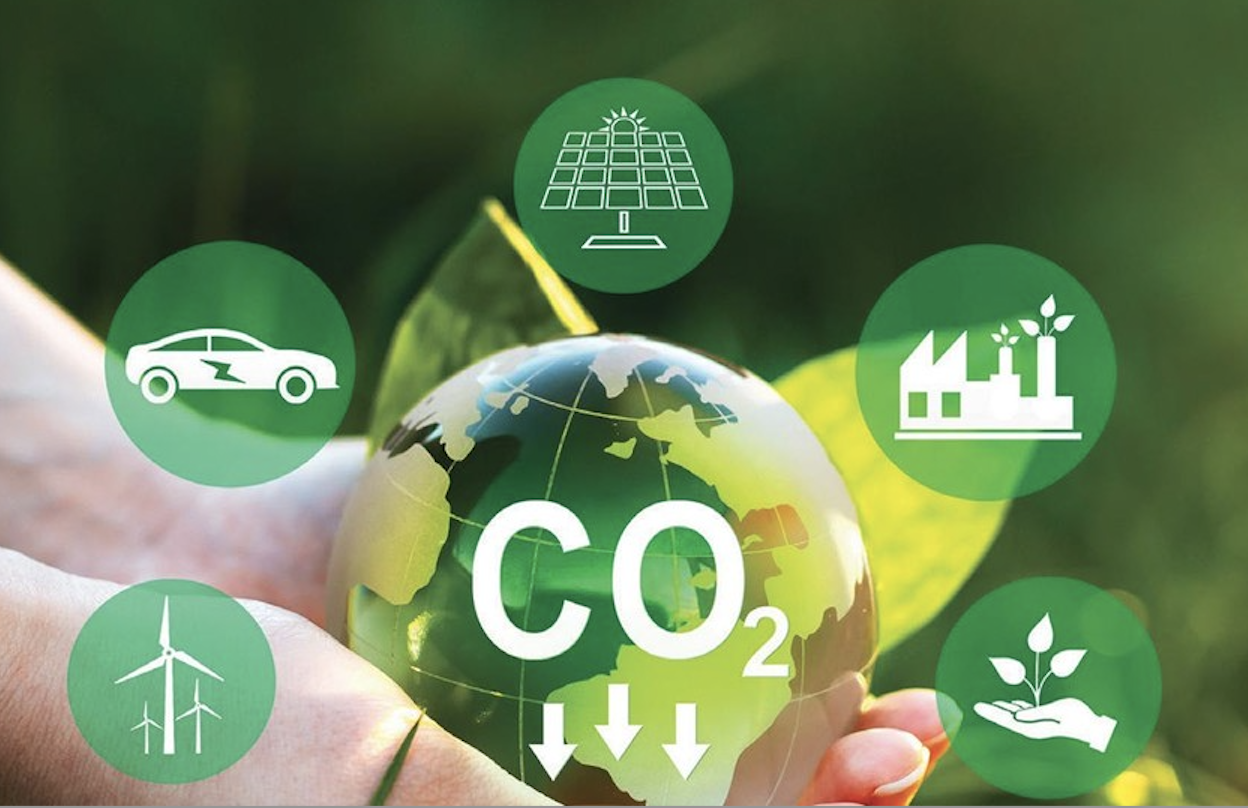
To reduce emissions to zero by 2050 as committed by the government of Vietnam at COP26, the Ministry of Natural Resources and Environment (MONRE) has joined forces with agencies to submit to the Prime Minister a list of business fields and facilities that must carry out greenhouse-gas emission inventory.
The list includes facilities in industry and trade, transportation, construction, natural resources with annual emissions of 4,000 tons of CO2 equivalent and higher.
Also on the list are thermal power plants, industrial production facilities, commercial buildings, cargo transport firms that consume 1,000 tons of TOEs (tons of oil equivalent) or higher; and facilities that treat solid waste with annual capacity of over 65,000 tons.
In addition, agencies have proposed adding husbandry to the list.
It is estimated that about 3,000 businesses in Vietnam have to carry out mandatory greenhouse-gas emission stocktaking. They have to do this once every two years; and implement plans to mitigate greenhouse-gas emissions. They have the responsibility of reporting the emission reductions by December 31.
Livestock facilities, however, have voiced their concern about the mandatory inventory, saying that it is difficult for them to do.
Nguyen Xuan Duong, chair of the Vietnam Livestock Association, agrees that reducing greenhouse-gas emissions and protecting the ozone layer is the right policy, but says this will put a heavy burden on the industry.
It is estimated that each livestock facility will have to pay VND100-150 million a year for stocktaking. Meanwhile, the majority of livestock establishments don’t have qualified workers to conduct the stocktaking, except for some milk-cow and pig breeder farms which use professional staff.
The stocktaking at the TH Group is an example. A representative of the large dairy producer said it was very difficult to do in the first two years of the four years of stocktaking implementation, though TH Group had made a big investment and was well-prepared.
Ngo Hoang Ho from Vietnam NOK said the stocktaking process is complicated, adding that the majority of enterprises still don’t know what they have to do. Ho had to attend a short-term training course on greenhouse-gas emission stocktaking to build an emission reduction roadmap for the company.
Many small and medium sized enterprises have to hire other units to do the stocktaking, which costs them a lot of money. He suggested that there should be a simple toolkit for enterprises to do the inventory themselves and make reports.
Digitization solution
At a seminar on promoting digitization in agriculture, Vu Minh Quang from FPT IS said that inventorying greenhouse gas emissions will help mitigate emissions, which will reduce production costs, because emissions are associated with energy consumption and spending in supply chains.
He said that the shift to green food suppliers all over the world has opened up new opportunities for enterprises.
When reducing emissions, enterprises’ risks will also fall because CBAM (Carbon Border Adjustment Mechanism) will begin to tax carbon from 2026.
The EU has already begun applying CBAM to control emissions and apply carbon tax on imports to the EU, including steel, aluminium, cement, electricity and fertilizer. The US is also considering applying CBAM for eight products related to Vietnam’s exports.
Quang anticipates Vietnamese enterprises facing great challenges when having to inventory greenhouse gas emissions. They will have to spend time to collect data and calculate with complicated emission coefficients. It is also difficult to make reports because each country and organization sets specific reporting models.
Enterprises may have to pay hundreds of million of dong, or billions of dong, and take 3-6 months for annual stocktaking.
However, the good news is that the work will be easier if enterprises digitize. Quang said FPT has built a platform that digitizes the stocktaking process called VertZéro.
The tool is expected to help reduce the time needed for stocktaking to seven days and cut costs by 90 percent.
Tam An